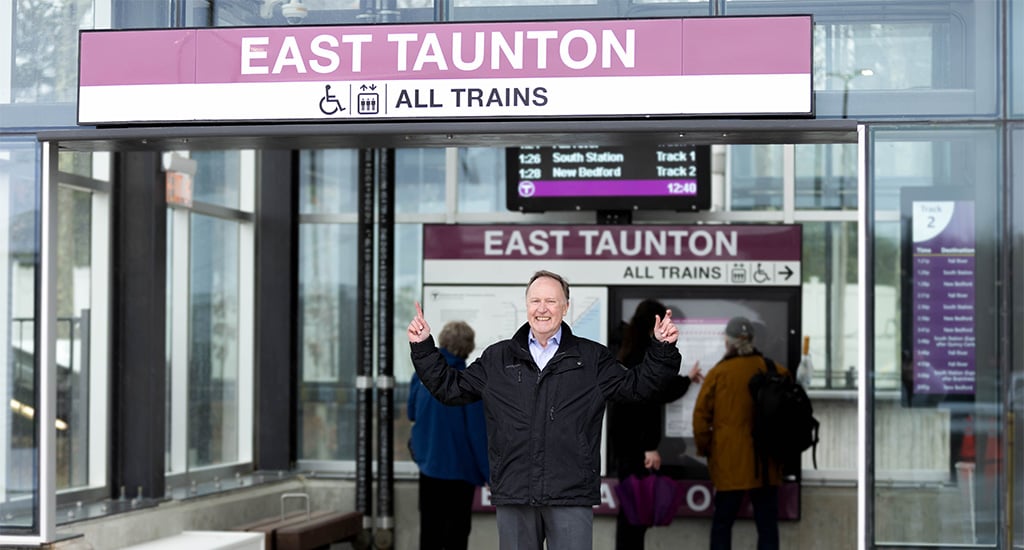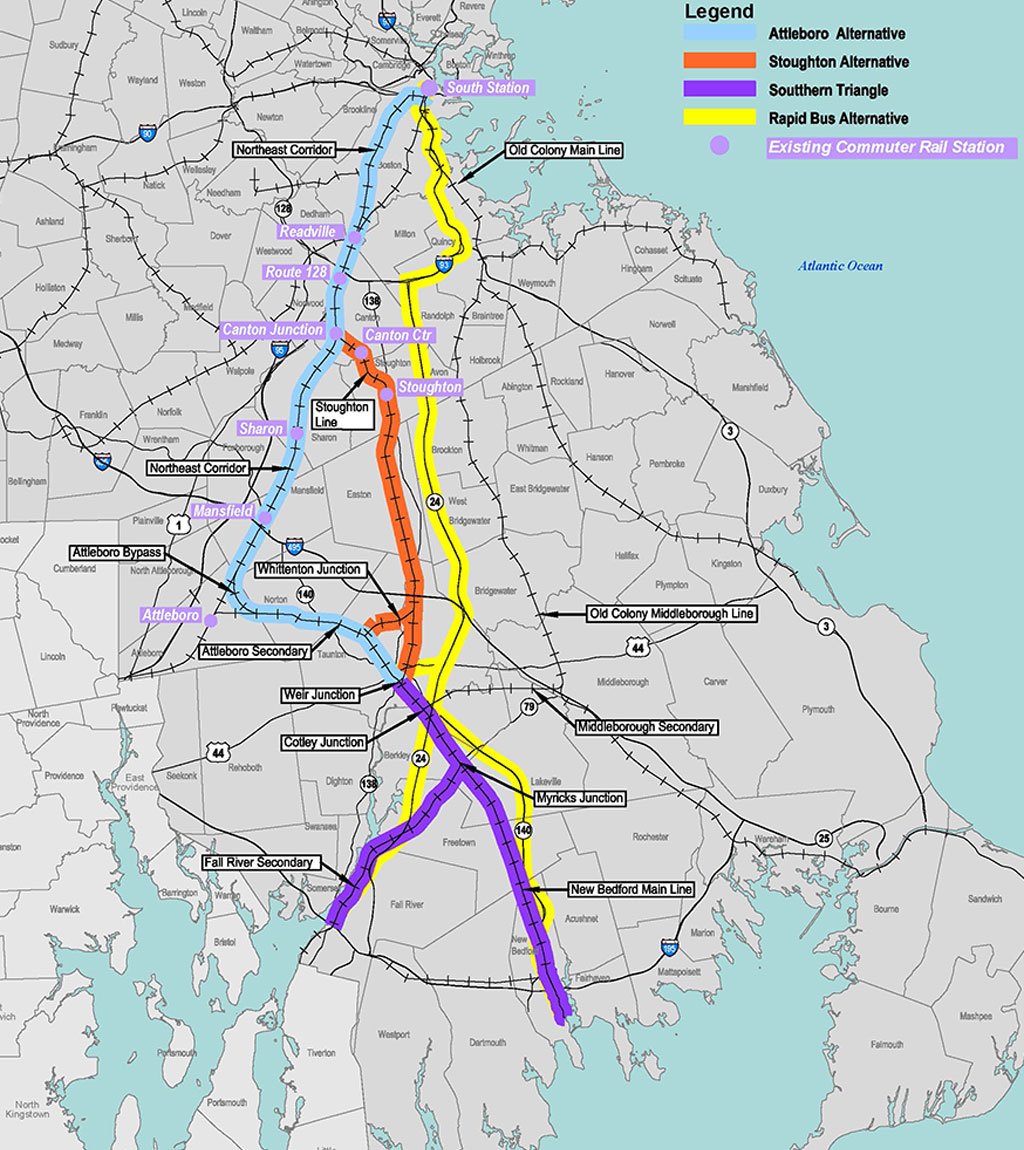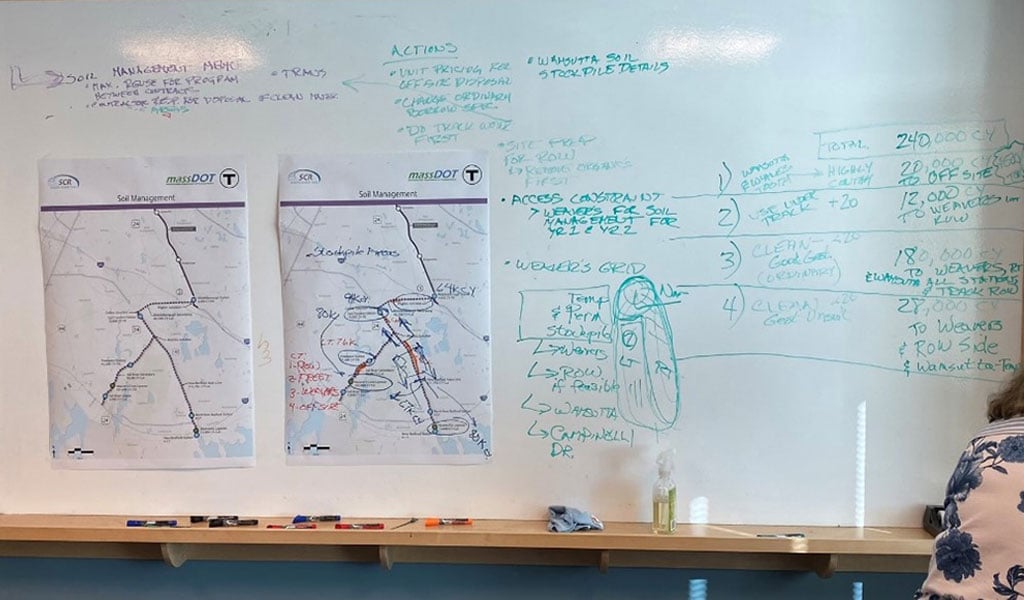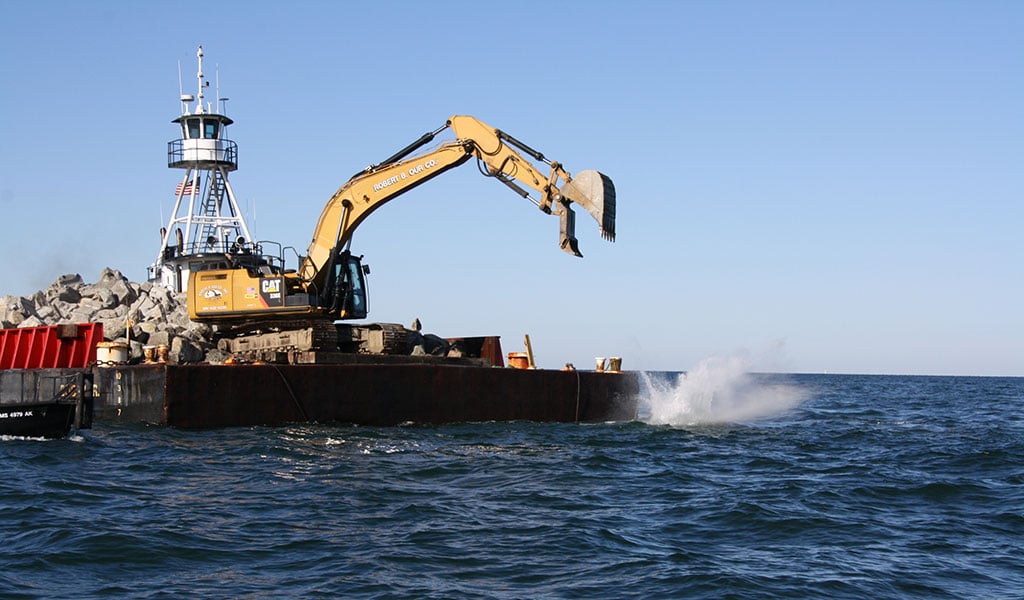Forward-thinking insights focused on a more sustainable tomorrow.
30 Years on South Coast Rail: A Journey to Connect Southeastern Massachusetts with Commuter Rail
Rick Carey is a veteran South Coast Rail project team member. Having worked on the project for the duration of his 30 years at VHB, he is the longest-standing project team member and has served in pivotal project roles from Project Engineer to Program Manager to Design Manager. This is Rick’s story.

On March 24, 2025, a dream more than three decades in the making became a reality with the launch of the Massachusetts Bay Transportation Authority’s (MBTA) South Coast Rail commuter service. This milestone marks the completion of a project that overcame numerous starts and stops, including changes in leadership spanning six governors, funding challenges and shifts in timelines and project phases. Regardless of these challenges, the mission remained unchanged: to improve access to public transportation for underserved Southeastern Massachusetts communities.
The Initial Vision: Early Days
My involvement with the South Coast Rail project began in 1995 when I joined VHB. The project had begun a few years earlier, with the plan to create a commuter rail connection between Boston and Fall River, New Bedford, and Taunton—gateway communities that historically lacked reliable and effective public transportation options.
Having lived in the South Coast area, I could relate firsthand to the desire for reliable commuter rail service, as the region struggled with limited economic opportunities yet offered more affordable housing options than Boston. Introducing train service could spur economic growth, enhance job accessibility, and open educational opportunities, transforming lives in these communities—a change I was excited to contribute to.
Overcoming Challenges: Keeping Momentum

Mapping bridges for early action projects.
While the intention in the 1990s had been to build the entirety of South Coast Rail infrastructure as one project, funding hurdles quickly became apparent.
To advance the project in a series of more manageable efforts, our team identified and advanced a number of “early action” projects—railroad bridge replacements and track upgrades that were beneficial both for keeping the project rolling forward and providing immediate improvements. These projects were quicker to design, presented minimal environmental impact, and required little right-of-way acquisition. They delivered immediate value to existing freight services and marked progress, demonstrating MBTA's dedication to the region and maintaining political and community support. We succeeded in designing and permitting four early action projects (each consisting of three to four bridges) between 1995 and 2010.
In addition, our team also helped the Massachusetts Department of Transportation (MassDOT) secure one of the first-ever Transportation Investment Generating Economic Recovery (TIGER) grants as part of the American Recovery and Reinvestment Act funding in 2009. The TIGER funds were used for three early action bridge projects in New Bedford, which later received a Construction Management Association of America project achievement award.
While the early action projects helped advance South Coast Rail, there were many years where it was bogged down in a series of delays and holds, challenging even my own optimism at times.
In the end, it was the enthusiasm and unwavering commitment from the Southeastern Massachusetts communities, along with key elected officials, MassDOT, and MBTA, that kept South Coast Rail alive. It has been incredibly rewarding to work in service of and alongside these project advocates, who were a consistent reminder of why we were doing this work.
Reviving Enthusiasm: Gaining Speed with Renewed Funding

Map of alternatives advanced through NEPA/MEPA
In 2007, newly elected Governor Deval Patrick and his team initiated a renewed push for the project, underpinning its importance with a plan for action including alternative studies, urban planning, and an economic analysis.
In tandem with these efforts, our team worked with MassDOT and the MBTA for a fresh look, evaluating more than 64 alternatives as part of thorough National and Massachusetts Environmental Policy Acts (NEPA/MEPA) environmental reviews. During this phase, the project team introduced innovative strategies such as evaluations of the economic effects of a new commuter rail connection, profitability, land-use planning for corridor communities, forming a partnering working group with key regulatory authorities and facilitating a regional task force involving municipalities and business coalitions. The preferred alternative—Stoughton Straight Electric Commuter Rail—emerged in 2011, invigorating the project with community support and proven economic benefits. However, prohibitive costs, permitting challenges, and an extended timeline continued to hinder the project’s advancement.
The Next Phase: Preliminary Design and Permitting
By 2014, MassDOT and MBTA had recommitted to the project, appointing VHB with HNTB in a joint venture as the Program Management/Construction Management (PM/CM) team to direct South Coast Rail into its next phases: preliminary design, permitting, and oversight of the final design and construction management.
As Program Manager of the PM/CM team, I witnessed firsthand the growing momentum to progress the project. Nevertheless, economic challenges from inflation threatened budgets due to the prolonged timeline, necessitating adaptive strategies.
Pivot: Phasing the Project Approach
In 2017, a new phased construction plan was initiated by MassDOT and the MBTA under Governor Charlie Baker's leadership, aiming to quickly deliver Commuter Rail service to the South Coast via already active freight lines—a strategic pivot that reduced costs and avoided complex wetland permitting processes.
The first planned phase (Phase 1) would extend the existing Middleborough Commuter Rail service via the Middleborough Secondary, Fall River Secondary, and New Bedford Mainline to serve the region. Because these track corridors were already active freight lines, they supported a more streamlined design and permitting timeline. This plan also avoided the need for a wetland variance—a lengthy and complicated process—while staying within a more manageable $1 billion price tag.

After completing the MEPA Notice of Project Change process for this phased approach, the VHB-HNTB joint venture shifted from serving as PM/CM role to Final Designers—a role we were uniquely positioned to take on quickly with minimal onboarding time, given our deep knowledge of and longstanding involvement with the project. I am proud of the way our team pivoted once again, responding to the changing needs of the project.
Cost Savings and Innovation in Project Delivery
As the Final Designers for Phase 1, our team embraced the technical challenges and collaboration to tackle potential obstacles that could have hindered the MBTA and MassDOT's timeline and budget expectations. One of our primary focuses was environmental sensitivity; by designing with sensitivity to natural resources, we avoided the prolonged wetland variance process and other environmental permit delays.
Strategically, we also limited impacts on MassCoastal freight operations. By phasing and staging construction activities thoughtfully, we minimized disruptions. An example of this was designing for accelerated bridge construction techniques that enabled rapid bridge replacements, minimizing downtime and disruption to freight services.
Faced with budget constraints and tight timelines, our team proactively sought cost-saving measures. In managing soil excavations, we assessed the existing track subgrade materials for stability, which allowed us to retain and use existing stable subbases where feasible. Collaborating with the Massachusetts Department of Environmental Protection, we devised a plan to repurpose more than 300,000 cubic yards of excavated materials throughout the project, thereby avoiding costly transportation of surplus soils to out-of-state landfills. Our soil management strategy was showcased as a success at the 2022 AEHS Soils Conference.


(Left) Brainstorming soil management strategy. (Right) Using repurposed bridge abutment material to create fish habitat reefs.
We extended this resourcefulness to other materials. For instance, granite blocks from dismantled rail bridge abutments were repurposed to create fish habitat reefs in coordination with the Massachusetts Division of Fisheries and Wildlife. We created a plan for the blocks to be efficiently stockpiled and transported, ultimately enhancing marine environments off Cape Cod’s coast.
It was fulfilling to know these efforts contributed positively to both project sustainability and environmental health.
Navigating Global Disruption
The onset of COVID-19 in 2020 posed unforeseen challenges as we finalized designs and prepared significant construction bids valued at more than $600 million. I was remarkably proud of how the MBTA and our team adapted, overcoming remote work barriers and constantly changing safety protocols to successfully bid and award these major contracts. A great testament to our design process was reflected in our engineer’s estimate deviating less than one percent from the contractor’s bid, underscoring our confidence in our designs during such demanding times.
Despite the pandemic’s continued workforce and supply chain issues, our team’s collaborative spirit with the MBTA and contractors meant that construction progressed uninterrupted through 2024, culminating in a successful construction and the start of commuter rail service.
The Finish Line: Reflecting on 30 Years and Future Opportunities
With the completion of infrastructure components like tracks, signals, communications, stations, layover facilities and bridges, extensive MBTA safety reviews, testing and training protocols, at long last the launch of the South Coast Commuter Rail service occurred on March 24, 2025. This pivotal moment is both an ending and a new beginning, as the service promises significant transformation for southeastern Massachusetts.
First South Coast Rail train arriving East Taunton station / 00:22
Reflecting on my career and the 30-plus years I spent on South Coast Rail, I am honored by the opportunity to contribute to such a groundbreaking project alongside talented peers, stakeholders, and officials, many of whom I consider friends. Together, we all celebrate this significant achievement and the doors it has opened for the communities in the southeastern Massachusetts region. The long wait is finally over.
Reach out to me for more of the stories behind the South Coast Rail project by emailing me or connecting on LinkedIn.



